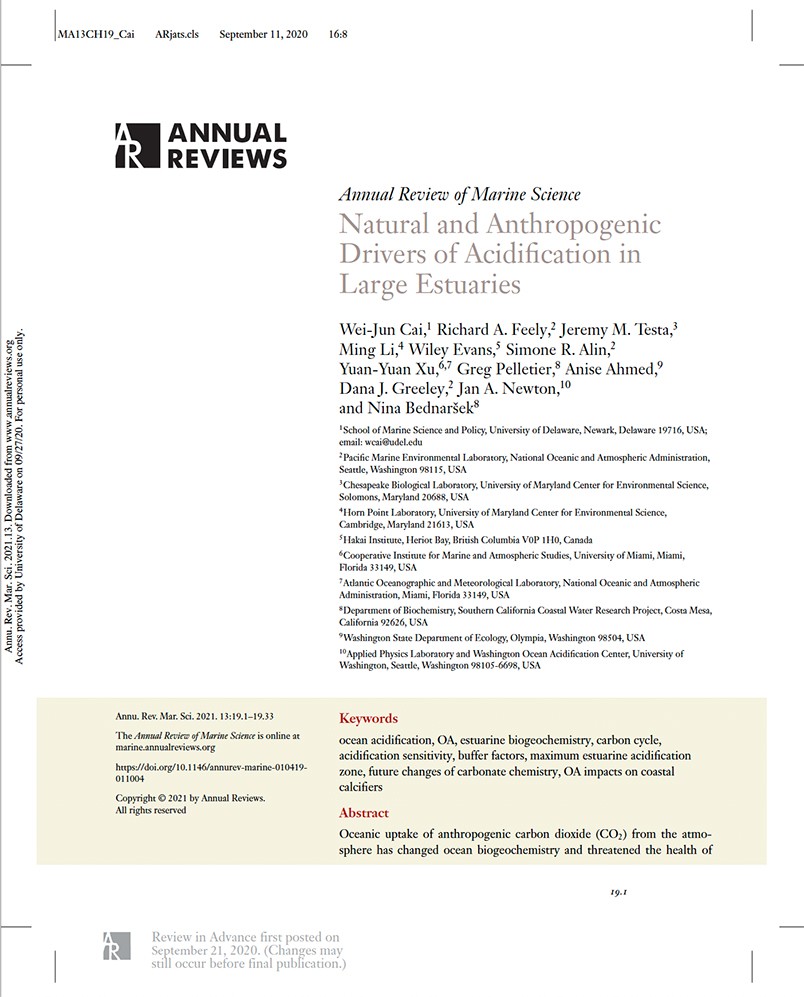Natural and Anthropogenic Drivers of Acidification in Large Estuaries Wei-Jun Cai, Richard A. Feely, Jeremy M. Testa, Ming Li, Wiley Evans, Simone R. Alin, Yuan-Yuan Xu, Greg Pelletier, Anise Ahmed, Dana J. Greeley, Jan A. Newton, Nina Bednaršek Annual Review of Marine Science 2021 13:1
Abstract
Oceanic uptake of anthropogenic carbon dioxide (CO2) from the atmosphere has changed ocean biogeochemistry and threatened the health of organisms through a process known as ocean acidification (OA). Such large-scale changes affect ecosystem functions and can have effects on societal uses, fisheries resources, and economies. In many large estuaries, anthropogenic CO2-induced acidification is enhanced by strong stratification, long water residence times, eutrophication, and a weak acid–base buffer capacity. In this article, we review how a variety of processes influence aquatic acid–base properties in estuarine waters, including river–ocean mixing, upwelling, air–water gas exchange, biological production and subsequent respiration, anaerobic respiration, calcium carbonate (CaCO3) dissolution, and benthic inputs.We emphasize the spatial and temporal dynamics of partial pressure of CO2 (pCO2), pH, and calcium carbonate mineral saturation states. Examples from three large estuaries—Chesapeake Bay, the Salish Sea, and Prince William Sound—are used to illustrate how natural and anthro-pogenic processes and climate change may manifest differently across estuaries, as well as the biological implications of OA on coastal calcifiers.
